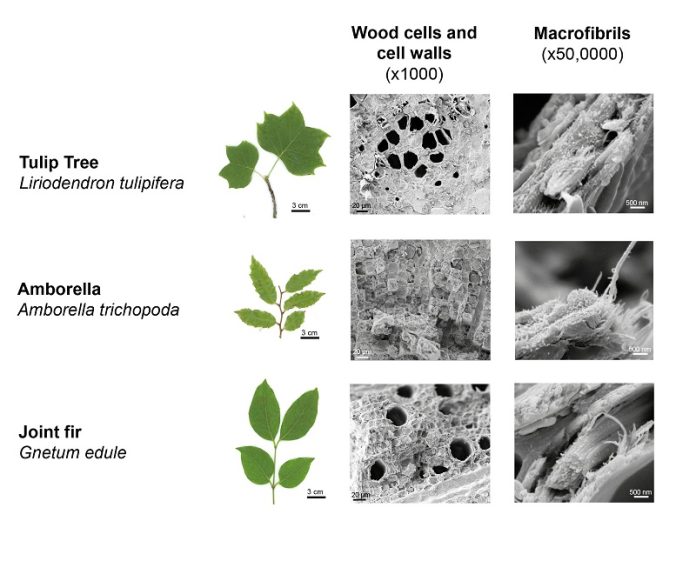
Researchers have discovered a completely new type of wood that could significantly improve how we capture and store carbon.
This breakthrough was made while studying the microscopic structure of wood from various iconic trees and shrubs.
The study suggests that planting a fast-growing tree commonly found in ornamental gardens could boost carbon sequestration in forests.
The research focused on Tulip Trees, which belong to the magnolia family and can grow over 100 feet tall.
Unlike traditional categories of hardwood or softwood, Tulip Trees have a unique type of wood.
Scientists from Jagiellonian University and the University of Cambridge used a special low-temperature scanning electron microscope (cryo-SEM) to examine the wood’s nanoscale architecture.
They discovered that the two surviving species of the ancient Liriodendron genus, known as the Tulip Tree (Liriodendron tulipifera) and the Chinese Tulip Tree (Liriodendron chinense), have much larger macrofibrils compared to their hardwood relatives. Macrofibrils are long fibers aligned in layers within the wood’s secondary cell wall.
Dr. Jan Łyczakowski, the lead author of the research published in New Phytologist, explained, “We found that Liriodendrons have an intermediate macrofibril structure, which is significantly different from both softwood and hardwood.
These trees diverged from Magnolias around 30-50 million years ago, coinciding with a rapid reduction in atmospheric CO2. This could explain why Tulip Trees are so effective at storing carbon.”
The researchers believe that the larger macrofibrils in this “midwood” or “accumulator-wood” may contribute to the Tulip Trees’ rapid growth and their exceptional ability to lock in carbon. Some East Asian countries already use Liriodendron plantations for efficient carbon capture, likely due to this unique wood structure.
Tulip Trees are native to North America, while the Chinese Tulip Tree is found in central and southern China and Vietnam.
This discovery was part of a survey of 33 tree species from the Cambridge University Botanic Garden’s Living Collections. The survey aimed to explore how wood ultrastructure evolved in both gymnosperms (such as pines and conifers) and angiosperms (like oak, ash, birch, and eucalypts).
Łyczakowski noted, “Despite its importance, we know little about how the structure of wood evolves and adapts to the environment. Our survey uncovered an entirely novel form of wood ultrastructure and a gymnosperm family with hardwood-like structures instead of the usual softwood.”
The study also examined the wood of two gymnosperms in the Gnetophytes family, Gnetum gnemon and Gnetum edule, and confirmed that they have a hardwood-like secondary cell wall structure, similar to angiosperms. This is an example of convergent evolution, where different species independently evolve similar traits.
The survey was conducted during the UK’s fourth hottest summer on record in 2022. The researchers collected fresh wood samples from the Cambridge University Botanic Garden, using ultra-cold nitrogen to freeze the samples before imaging them with the cryo-SEM.
Dr. Raymond Wightman, Microscopy Core Facility Manager at the Sainsbury Laboratory Cambridge University, said, “Our survey provided new insights into the evolutionary relationships between wood nanostructure and cell wall composition across different plant lineages. This research highlights the value of botanic gardens in modern scientific studies.”
The findings emphasize the potential of Tulip Trees and other species with unique wood structures to enhance carbon capture efforts. By understanding the diversity of wood ultrastructure, scientists can improve carbon sequestration programs and help mitigate climate change.



